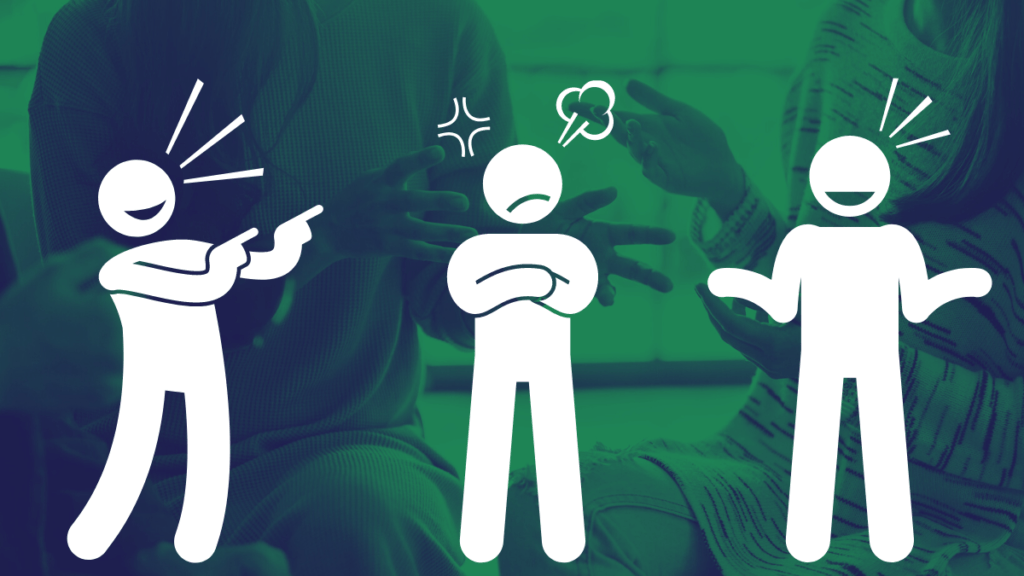Passive-Aggressiveness: Why I Used To Do It and How I Stopped

Frustration. Anger. Loneliness. Disappointment… Passive-aggressiveness could cover all these emotions in just one smirk or snark. When I was a teen, my number one reflex when it comes to externalizing feelings would be silence and sarcasm. There was no in between, whatever the emotion was. There was always a big mystery on why I couldn’t be direct with how I feel. I don’t really know where it came from or how I developed it, but one thing I certainly know is that it’s not healthy.
This dysfunctional behavior would always develop in adolescence. It’s a product that comes after we learn and experience the complexities of feeling emotions, but at the level where we’re not quite wise yet in expressing them. In my case, I started using this behavior when I was in highschool, to my friends. It took me quite a while before I would actually notice it and recognize the negativity behind it. And it even took me longer time to process and refrain from using such behavior.
The many faces

Passive-aggressive behavior is a pattern of indirectly expressing negative feelings instead of openly addressing them. It is a deliberate and masked way of expressing covert feelings of anger. In this notion, there’s a disconnect between what a person says and what he or she does or wants to actually express. This behavior or practice have many faces.
The most usual manifestation of passive-aggressiveness is the silent treatment. Often, when we feel heavy emotions towards someone, we just let silence express the weight of it. We expect other people to feel bothered with the silence or cold treatment, to figure out what’s wrong by themselves. This was my go-to act when I was a teenager. When I’m mad, I won’t really tell the reason why I’m mad, I will just ignore the person whom I’m mad without telling him or her. Growing up, I realized that it was really a naïve thing to do.
Some would use sarcasm for their passive-aggressive behavior. Instead of really expressing the problem, some would rather bury it with fake kindness towards the person they have a problem with. This would usually manifest in backhanded compliments—remarks that sound good but would actually mean a different thing. It’s like critical or mocking comments made in an indirect or sarcastic way.
Passive-aggressive people also like downplaying personal statements. They mask up their vital or critical emotions as something that is not important—to emphasize more that it is actually a big thing. They are afraid, ashamed, and unwilling to express themselves. For example, saying things like “This is so silly, but…” or “This is just a small thing, but…”.
Lastly, passive-aggressiveness also manifests in gossiping or talking behind someone’s back. Since such people are not a fan of confrontations, they would just vent out their frustrations to someone else. They have a knack for telling someone about something that someone else did that upset them. They do it in order to indirectly communicate to them that they should behave differently towards the person they have a problem with.
Why I used to do it

Despite its many face, passive-aggressiveness always roots in one reason: an underlying fear and avoidance of direct conflict. When I use that certain behavior, it’s usually because I feel powerless and helpless. I have a tendency to downplay and invalidate my anger because I grew up thinking that being angry is a socially unacceptable emotion. Instead of confronting the person, I just sweep my feelings under the carpet. The problem is, my feelings would manifest in other forms, other than confrontation and direct statements.
Another reason could be someone’s upbringing. Children who are raised by overly controlling parents, in an environment where self-expression is not permitted, are forced to learn other ways to express feelings of anger and hostility. This would result to masking emotions in other expressions or outlets that are not socially healthy.
Convenience could also be a factor. This might me the most vital reason why I relied to passive-aggressiveness. Denying and disregarding heavy emotions could come across as more convenient than actually confronting someone. In picture, it does look easier, but in reality and in the long-run, it’s very unhealthy and destructive. I’ve come to realize that harboring pain and anger could be really stressful. There are also times when the emotions could bottle up and explode. Directly talking things out is still more ideal.
How I stopped it

Needless to say, passive-aggressiveness is a toxic behavior. Whether you find yourself in a relationship with someone that acts such way, or you recognize such patterns within yourself, consider eliminating it. There are more effective ways to communicate and relate to others in a healthy manner.
I ultimately learned to refrain using passive-aggressiveness when I started recognizing my emotions. It’s okay to be angry sometimes, as long as your anger comes from a valid standpoint. You can still be a positive person and feel emotions we typically label as negative. In fact, it is more human and genuine to feel those emotions every once in a while. What’s important is that you express that emotion in the right way. We should be direct, but at the same time, less aggressive and more informative. We should explain why we are angry or disappointed and give out ways how to resolve it.
When I came to realize that my passive-aggressiveness was rooted from my fear of confrontation, I decided to slowly not be afraid of it. Confrontations are essential for relationships, and we should be open for it. It’s not necessarily a bad thing, as long as we still maintain our respect and composure. This is still true even if positivity isn’t the first thing that comes to mind when you think of it. Control is something that is not easy to master, but when you finally do, it pays off gloriously.
Lastly, it’s also vital to be more assertive instead of being more aggressive. What’s the difference? Assertiveness is a characteristic of command that comes in a place of reason and sense, while aggressiveness is just based off emotions. In discussing things, we need to state facts clearly and be clear about our own opinions. We shouldn’t let emotions take control of us. Let the person know the impact of her behavior in clear statements. Of course, this would also be more possible if we believe in ourselves.
It’s a long, often difficult journey, but as a first step, we need to practice listening to what we want and give it to ourselves. Reasonable expression is the killer of passive-aggressiveness. We need to stop suppressing our emotions because it could resurface in other unhealthy ways. There’s always no harm in being direct and honest.
Xian Oquendo is a free-spirited writer and camera-person from Manila. His passion connects facets of poetry and visuals. Whether inside the cinema or in the groove of the city's streets, he is always in the pursuit of the transcendental.










